Famous Pop Art Easy Famous Pop Art
How would you define what Pop Art is, and what does it represent for you? The international phenomenon that was Pop Art emerged in the mid-1950s and early 1960s. Some six decades later, the influence and mark of pop art artists can be seen in almost every aspect of our modern society. Considered by some as a direct descendant of Dadaism, regarding the way it mocked the established art world by appropriating images from the street, supermarket, mass media and presented it as art in itself, Pop Art focused on mass production, celebrity and the expanding industries of advertising, TV, radio and print media. Ultimately, it shaped a completely new cultural identity in the field of art and design. The art movement aimed to elevate popular culture to the level of fine art, thus blurring the lines between high and low arts. With one of the key principles being that there is no hierarchy of culture and that art should be able to borrow from any source, Pop Art challenged the traditions of fine art, questioned the established framework of creation and introduced a whole new world of aesthetics. So, let us have a look at ten most famous Pop Art artists whose work generated, developed, influenced and formed the colorful and vivid world of Pop Art. Through their paintings, sculptures and images, these Pop Art artists left a significant mark on the world of art and captivated imaginations of generations to come, redefining our visual perspective of the popular culture around us.
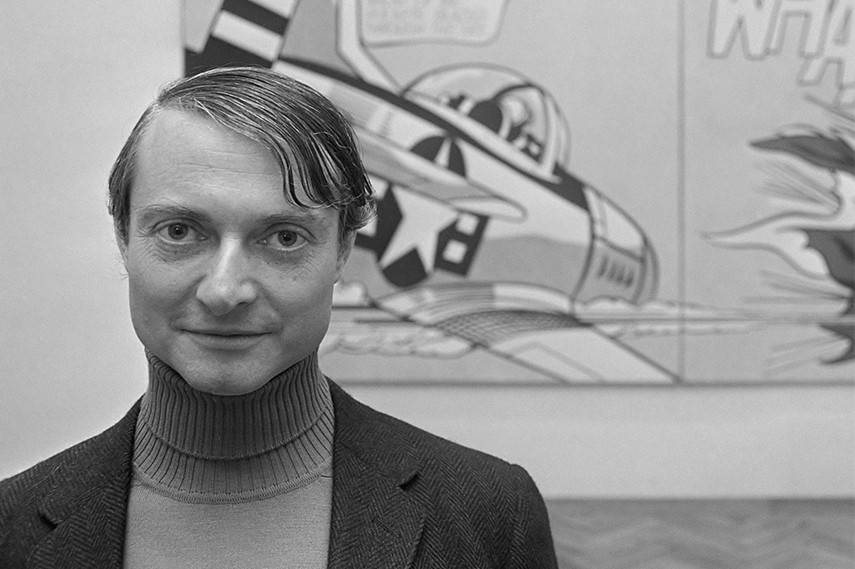
Roy Lichtenstein – Revolutionizing Modern Art
One of the first names in Pop Art to garner widespread renown, Roy Lichtenstein quickly became a leading figure of the movement. His work was mainly inspired by comic strips, and even though it often met with negative criticism of banality and lack of originality, it defined the basic premise of Pop Art through parody. The high-impact, iconic images of Lichtenstein have revolutionized Pop Art and Modern Art. By removing himself from the dominating Abstract Expressionism, which focused on the tragic themes of the artists' souls, Roy found his inspiration in the surrounding culture, and not through exploration of the artist's individual feelings. He built a significant body of work from mass-reproduced images, which provoked endless debates over the notions of originality, consumerism and explored the fine line between art and entertainment. This was exactly one of the highlighted principles of Pop Art which dwelled on an exploration of all forms of communication and messages through codes or language.
See more works by Roy Lichtenstein on our marketplace!
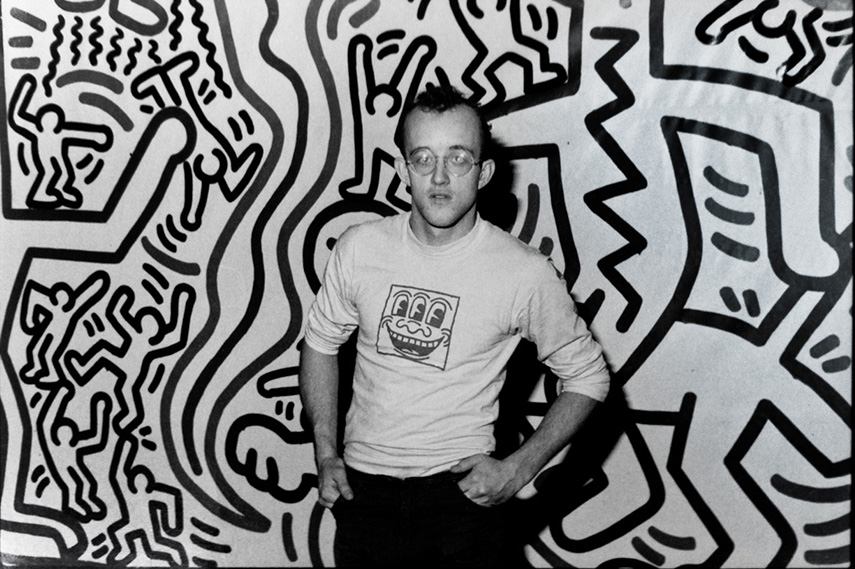
Keith Haring – Timeless Visual Language
One of the most widely recognized visual languages of the 20th century came straight out of Pop Art, with Keith Haring being responsible for its creation. When you see his work, there are no mistakes about it, you instantly know whether it's Haring or not, no need to second guess. His iconic characters and signature style are still very much present and popular in today's society. Haring was another leading figure in the effort to break down the barriers between high and low art, and create art that is for everyone. Aiming to make his art even more accessible to people, he opened up a retail store called the Pop Shop where he sold posters, T-shirts and other affordable Pop Art images featuring his signature designs. Even though his life abruptly ended due to AIDS-related complications, Haring left behind a highly prolific career of a groundbreaking artist whose work resonates decades later in the modern culture.
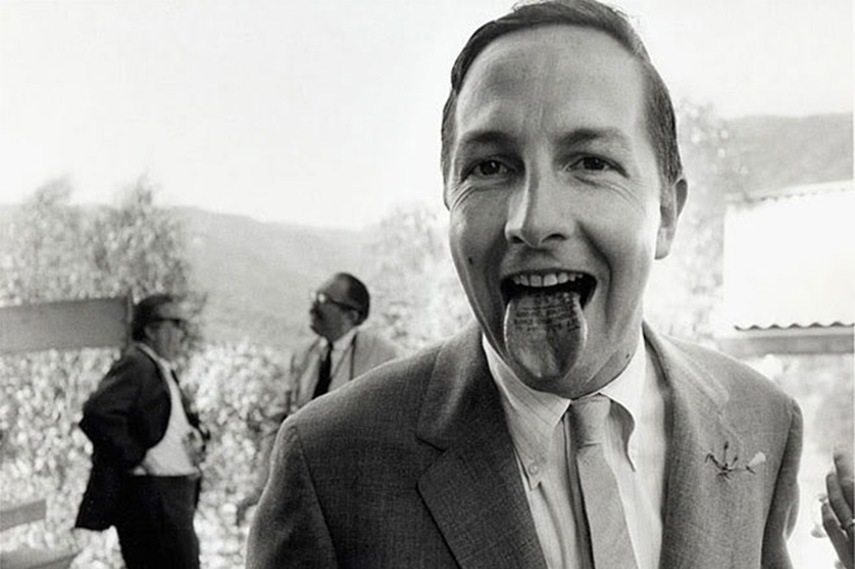
Robert Rauschenberg – Capturing the Visual Noise in a Framework of Ironic Allegory
Radical blending of materials and methods brought Robert Rauschenberg to the forefront of several art movements, including Pop Art. Being one of the early innovators of silkscreen printing, Rauschenberg took advantage of new commercial printmaking processes of the time, thus transferring photographs and images to the canvas. The multiple reproducibility of images, which had been used only in commercial applications up until that point, became an innovative tool in the creative hands of Robert Rauschenberg. By combining oil painting with photographic silkscreen, he mirrored our experience of mass-media, capturing the visual noise in a framework of ironic allegory. Alongside of Jasper Johns, Rauschenberg would lay the foundations for the bridge between Abstract Expressionism and what would become American Pop Art.
Be sure to check out available artworks by Robert Rauschenberg on our marketplace!

Richard Hamilton – Playful and Bold, dDing Whatever He Felt Like
We're moving on to yet another famous Pop Art artist. Inspired by the vulgar and everyday, playful and influential Richard Hamilton was dubbed as the father of the Pop Art movement. According to some, Hamilton was even the original coiner of the term itself, saying that he first used Pop Art in a letter to architects Alison and Peter Smithson regarding one of the exhibitions. Either way, Hamilton certainly remains one of the earliest and most influential artists of the movement. His 1956 collage named Just What Is It That Makes Today's Homes So Different, So Appealing? featured a living space cluttered with a plethora of objects of desire such as the vacuum cleaner, TV set, tinned can, tape recorder, body-builder muscles etc. Although this consumer's catalog displayed a certain level of playfulness, it also depicted an underlined level of horrible disquiet of that age. Phallic lollipops, pop-up toasters, recycled imagery of popular American magazines… these are just some of the symbols Hamilton boldly utilized in his ground-breaking artwork, and to best describe his career, and perhaps even the whole principle of art-making in general, we'll leave you with one of Richard Hamilton's quotes:
People don't seem to understand that an artist is free to do whatever he wants, and I've always relished that possibility. I do whatever I feel like.
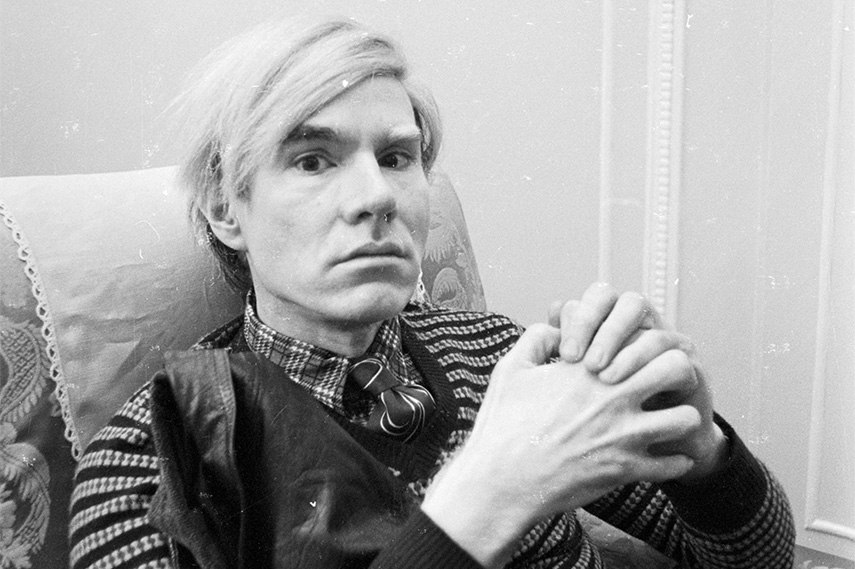
Andy Warhol – Pioneering Beacon of Pop Art
Of course, there can be no Pop Art discussion without inclusion of one of the most prolific and popular artists of his time, Andy Warhol. The superstar of Pop Art, Warhol broke into worldwide fame with his already legendary Campbell's Soup Cans and Gold Marilyn Monroe. Among many groundbreaking things that are attached to this prolific Pop Art artist, he was also one of the first artists ever to exhibit video as an artwork. This may sound common and normal nowadays, but in the 1960s when Pop Art movement was blossoming, it was seen as almost revolutionary. Usually surrounded by celebrities, Andy Warhol was a prominent figure in the NY night-life scene, the famous line used by many at the time stated that you knew you were at a good party in New York if Warhol showed up. As Pop Art played an important part in the breakdown between high and low art forms, Warhol's work served as a pioneering beacon in these developments, and ultimately, his career has influenced countless other artists and remains an important factor even today.
Want to own a print by Andy Warhol? You can do that by visiting our marketplace!

David Hockney – Playboy of the Modern Art and a Pop Art Pioneer in the UK
Taking it away from the US to the UK, David Hockney is considered to be a pioneering Pop Art artist in Britain. Even though Hockney personally rejects the labeling of his art as Pop Art, his versatile work encompasses painting, photography, printmaking, stage designing and other spheres which dwell on a variety of influences, some of it deriving from Popular Art and culture. Often referred to as the playboy of the modern art, due to his lascivious relationships, Hockney has been a dedicated creator throughout his career. In 1963, the British artist fell in love with Los Angeles, consequently developing a sun-drenched palette which started his series of paintings based on his fantasies of homoerotic life in California. These paintings of Californian swimming pools have undeniably associated him with the Pop Art movement emerging in both the UK and US in the 1960s.
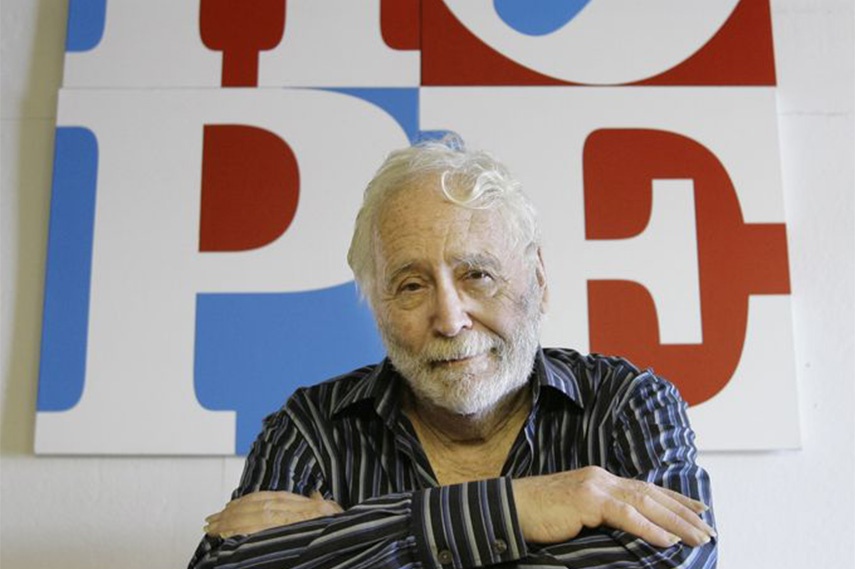
Robert Indiana – American Identity and the Power of Language
A self-proclaimed 'painter of signs', best known for his pop word art, Robert Indiana used a unique vocabulary of highway signs and advertisement-style works to portray the culture of 1960s America. Eye-popping paintings of text, numbers and symbols that reflected the abstraction of the time, also contained political and social overtones and carried an underlined message. Few pieces of Pop Art images are more widely recognized than Indiana's LOVE. Made in 1966, his signature image, which spelled quite simply the letters L O V E, has been replicate in countless different media and colors, becoming an icon of Pop Art. Robert Indiana focused on the reality of American society, through the use of simple but visually bold compositions and shaped canvases which made him one of the most famous American Pop Art artists.

James Rosenquist – Billboard Artist
Early descriptions of James Rosenquist often include the tag Pop Art, which the artist didn't like. Alas, Rosenquist was definitely one of the seminal figures of the movement. Through complex layering of popular motifs such as Coca-Cola bottles, packaged foods, kitchen appliances and women's lipsticked mouths and manicured hands, Rosenquist's artwork embodied the dizzying omnipresence of the consumer world. His large-scale, fragmented Pop Art paintings transformed the visual language of commercial work onto canvas. Having worked as a billboard painter, he often used the leftover paint to create small abstract paintings. Rosenquist explored the effects of using a billboard style of painting on smaller canvases, producing pieces which would play with shifts in scale and technique. Various pop images and symbols of the advertising language and pop culture ended up in his work. Rosenquist's signature pieces include fragmented, odd images combined and overlapped with one-another in order to form a visual story on canvas. His references to mass-produced goods, magazines, films and other aspects of mass media made him one of the key figures in the development of Pop Art in the United States.
Click to see a selection of James Rosenquist images on our marketplace!
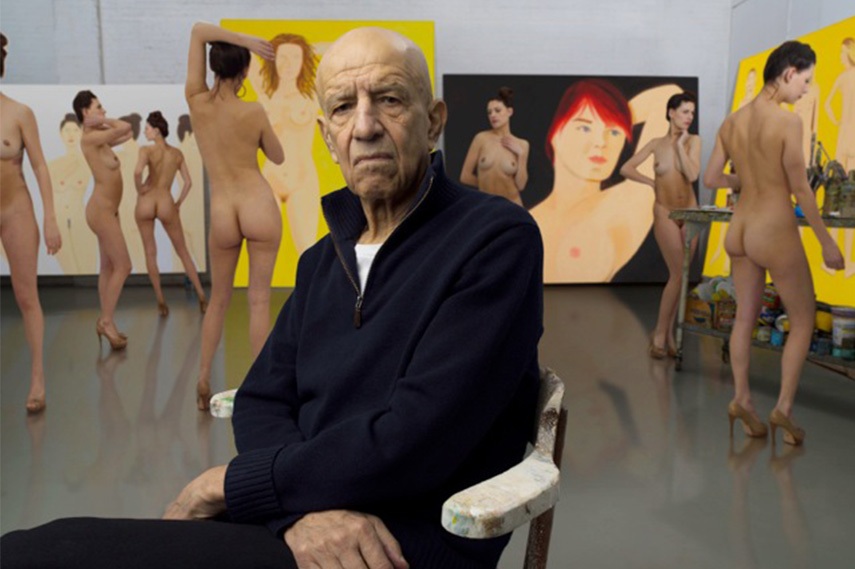
Alex Katz – Anticipating Pop Art
Another creator who wouldn't describe himself as a Pop Art artist, yet undeniably influenced and further developed the movement of Pop Art, is Alex Katz. Granted, Katz started earlier and kept going afterwards, and generally his art seems subtler, quieter and friendlier than other artworks of famous Pop artists. His stylized, simplified technique was cut to please the eye, but at the same time it never fell into the trivial. Katz seemed to had found a particular level between pop and depth, where he used his signature style to create simple, yet impactful artwork. Early on, he embraced monochrome backgrounds, which would later become a defining characteristic of his style and anticipate Pop Art. Katz's artwork bridged the gap between traditions of abstraction and figuration. The artist himself claimed that his art is about "surface", perhaps referring to the fact that his imagery did not have any obvious psychological complexity. Taking cues from Cinemascope movies and billboards, it is safe to say his highly stylized pictures anticipated Pop Art.

Takashi Murakami – Contemporary Heir to the Pop Art Movement
The internationally prolific contemporary Japanese artist, Takashi Murakami, once said that an artist is someone who understands the borders between worlds and who makes an effort to know them. Murakami is a creator who is fully aware of the modern age he works and lives in, accepting the fact that all art today is for sale. He blatantly refuses to delude himself about inner depths and underlined messages, he even denies having them. Well known for blurring the line between high and low arts, Murakami's oeuvre includes a wide range of mediums and is generally described as superflat, a term he coined. Incorporating motifs from Japanese traditional and popular culture and using flat/glossy surfaces, Murakami successfully created a style of his own. With recurring motifs and iconic characters, such as the smiling flowers, mushrooms and skulls, he even touches upon Buddhist iconography and the sexual complexes of otaku culture. Popping, candylike colors and anime-esque aesthetic make Murakami's style instantly recognizable. Drawing inspiration from Pop Art, the artist is considered as the heir to Warhol in his ability to appropriate commercial, popular images into high-quality pieces of fine art.
See more works by Takashi Murakami on our marketplace!
All images used for illustrative purposes only
Featured images:
Robert Indiana - Love sculpture; Richard Hamilton, John McHale - Just what is it that makes today's homes so different, so appealing; Keith Haring - Romero
vazquezhaveracter91.blogspot.com
Source: https://www.widewalls.ch/magazine/pop-art-artists
0 Response to "Famous Pop Art Easy Famous Pop Art"
Post a Comment